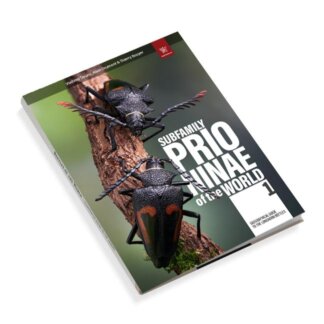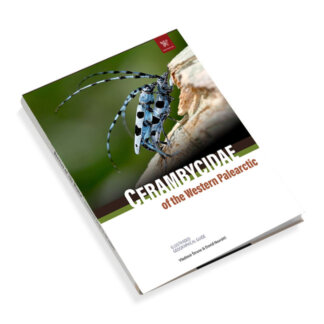Orthoptera is an order of insects that includes grasshoppers, crickets, and katydids. This diverse group is characterized by their distinctive features, including long hind legs adapted for jumping, and the ability to produce sound through stridulation, a process where they rub their wings or legs together. Orthopterans are found in a variety of habitats, from forests and grasslands to deserts and wetlands, showcasing their adaptability and ecological significance.
Book novelties:
Prioninae of the World I.
Cerambycidae of the Western Paleartic I.
Order Orthoptera, Insect
Book about Beetles
Buy now. List of family Coleoptera
You can find here: Carabidae, Buprestidae, Cerambycidae, Cicindelidae, Scarabaeidae, Lucanidae, Chrysomelidae, Curculionidae, Staphylinidae
There are approximately 20,000 species of Orthoptera worldwide, with a significant number residing in tropical regions. The order is divided into two primary suborders: Caelifera, which includes grasshoppers and locusts, and Ensifera, which encompasses crickets and katydids. Each suborder exhibits unique morphological and behavioral traits that contribute to their survival and reproduction.
Grasshoppers, belonging to the Caelifera suborder, are primarily herbivorous and play a crucial role in the ecosystem as both consumers of plant material and as prey for various predators. Some species, such as the desert locust (Schistocerca gregaria), can form swarms that devastate crops, leading to significant agricultural impacts. In contrast, crickets and katydids, part of the Ensifera suborder, are known for their nocturnal activities and complex mating calls, which are essential for attracting mates and establishing territory.
Books about Beetles
Unique pictorial atlases for identifying Beetles:
(2020) Tiger Beetles of the World, Cicindelidae, Illustrated guide to the genera
(2023) Tiger Beetles of Africa, Cicindelidae, Geographical guide to the family Cicindelidae
(2024) Tiger Beetles of Orient, Cicindelidae, Geographical guide to the family Cicindelidae
(2022) Ground Beetles of Africa, Afrotropical Region
(2022) Jewel Beetles of the World, Buprestidae, Illustrated guide to the Superfamily Buprestoidea
(2008) The Prionids of the World, Prioninae, Illustrated catalogue of the Beetles
(2010) The Prionids of the Neotropical region, Prioninae, Illustrated catalogue of the Beetles
Order Orthoptera, Insect
Orthoptera species exhibit remarkable adaptations that enhance their survival. For instance, many grasshoppers possess cryptic coloration that allows them to blend into their surroundings, reducing the risk of predation. Additionally, some species can produce noxious chemicals as a defense mechanism against predators. The study of these adaptations provides valuable insights into evolutionary biology and the ecological dynamics of various habitats.
Research on Orthoptera has significant implications for agriculture and biodiversity conservation. Understanding the population dynamics and behavior of these insects can aid in developing sustainable pest management strategies. Furthermore, monitoring Orthoptera populations can serve as indicators of environmental health, as they are sensitive to habitat changes and pollution. Order Orthoptera, Insect
Conclusion Order Orthoptera, Insect
In conclusion, Orthoptera represents a fascinating and ecologically important group of insects. Their diverse adaptations, behaviors, and roles in ecosystems underscore the need for continued research and conservation efforts. By studying Orthoptera, scientists can gain a deeper understanding of ecological interactions and the impacts of environmental changes on insect populations.


